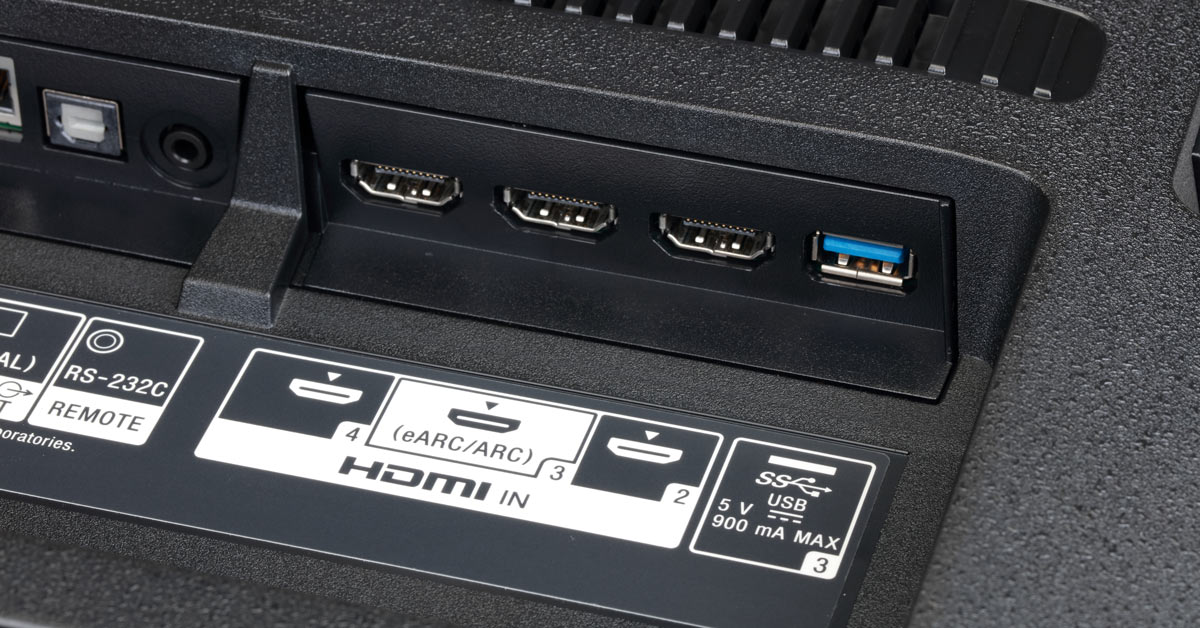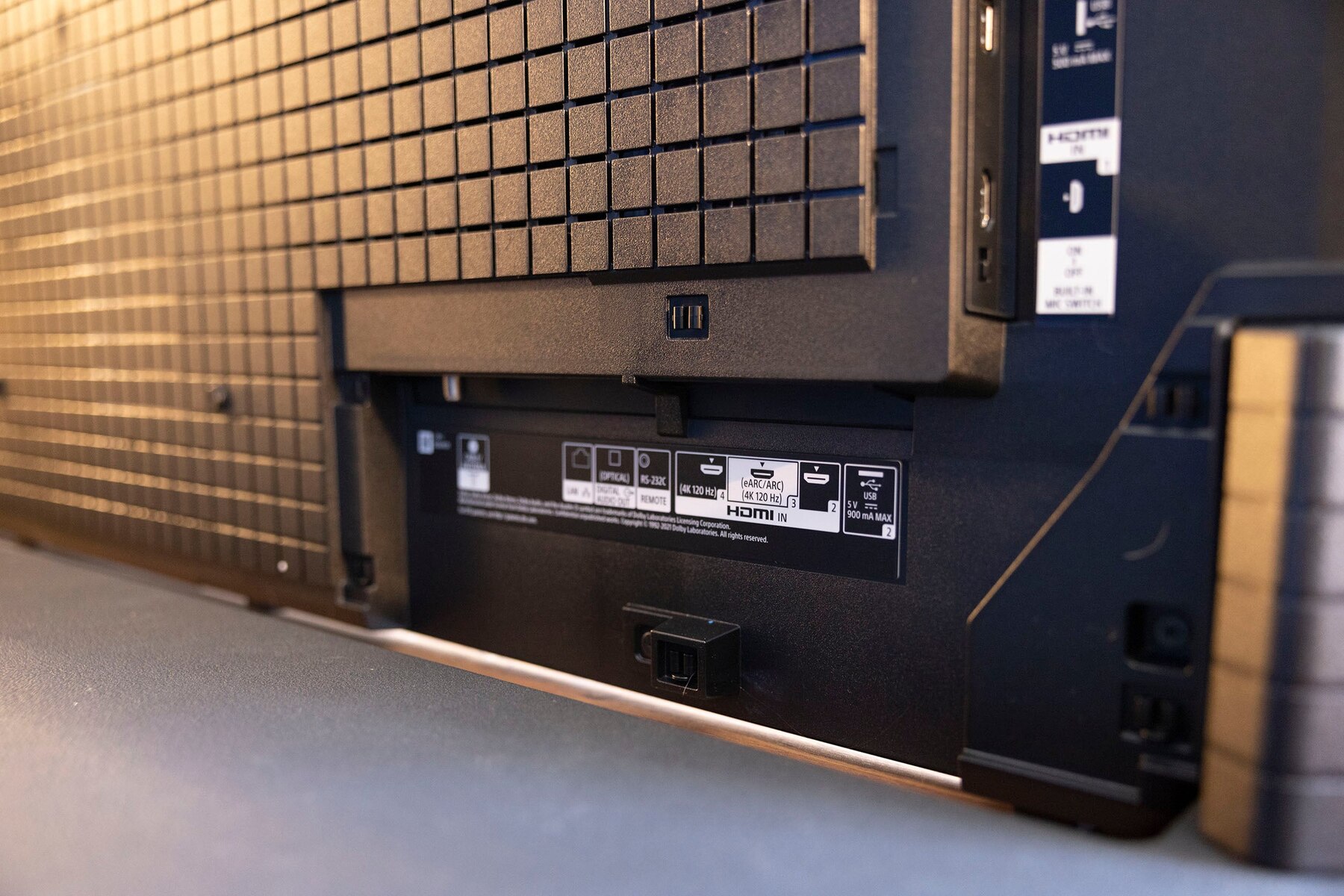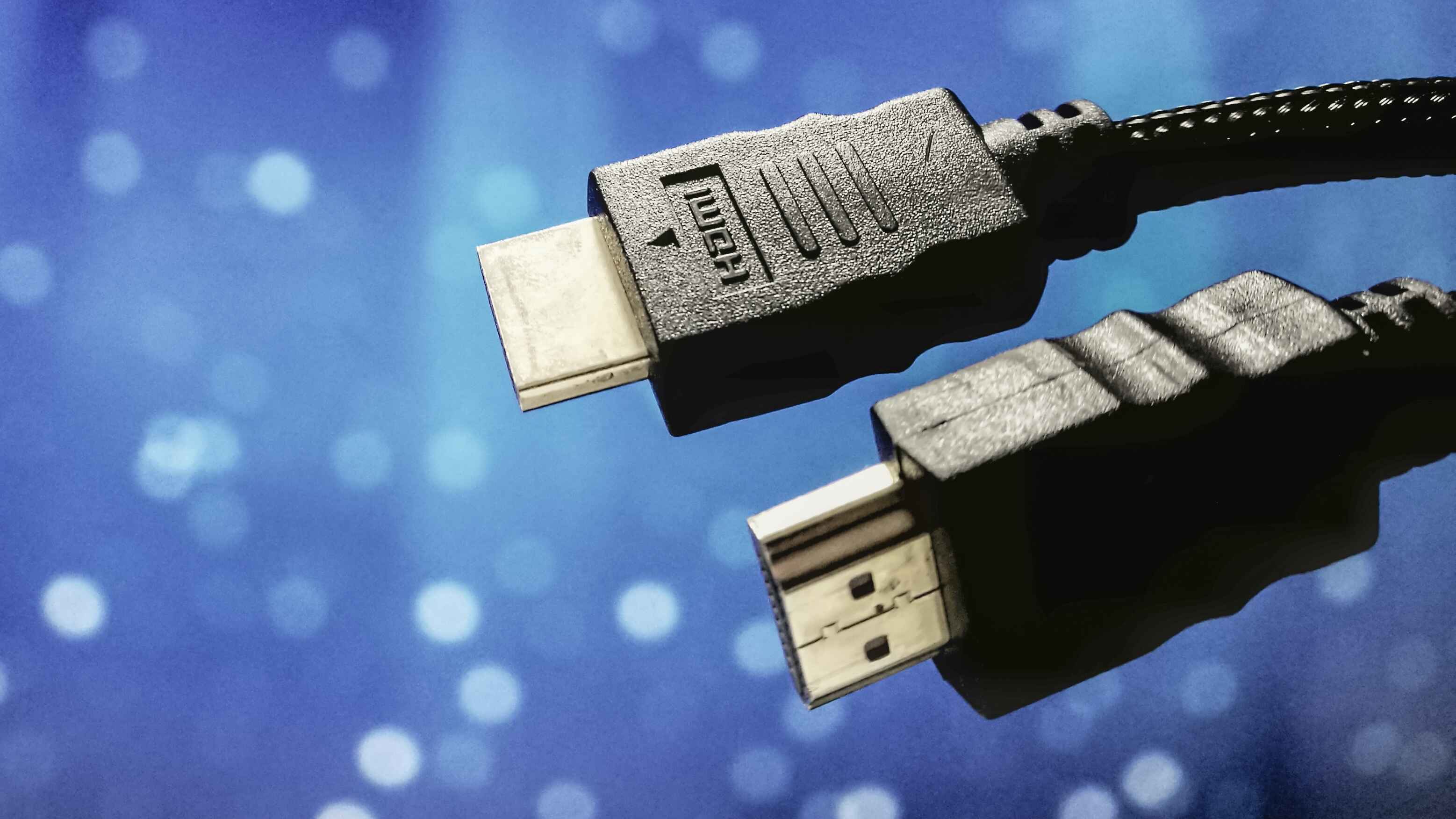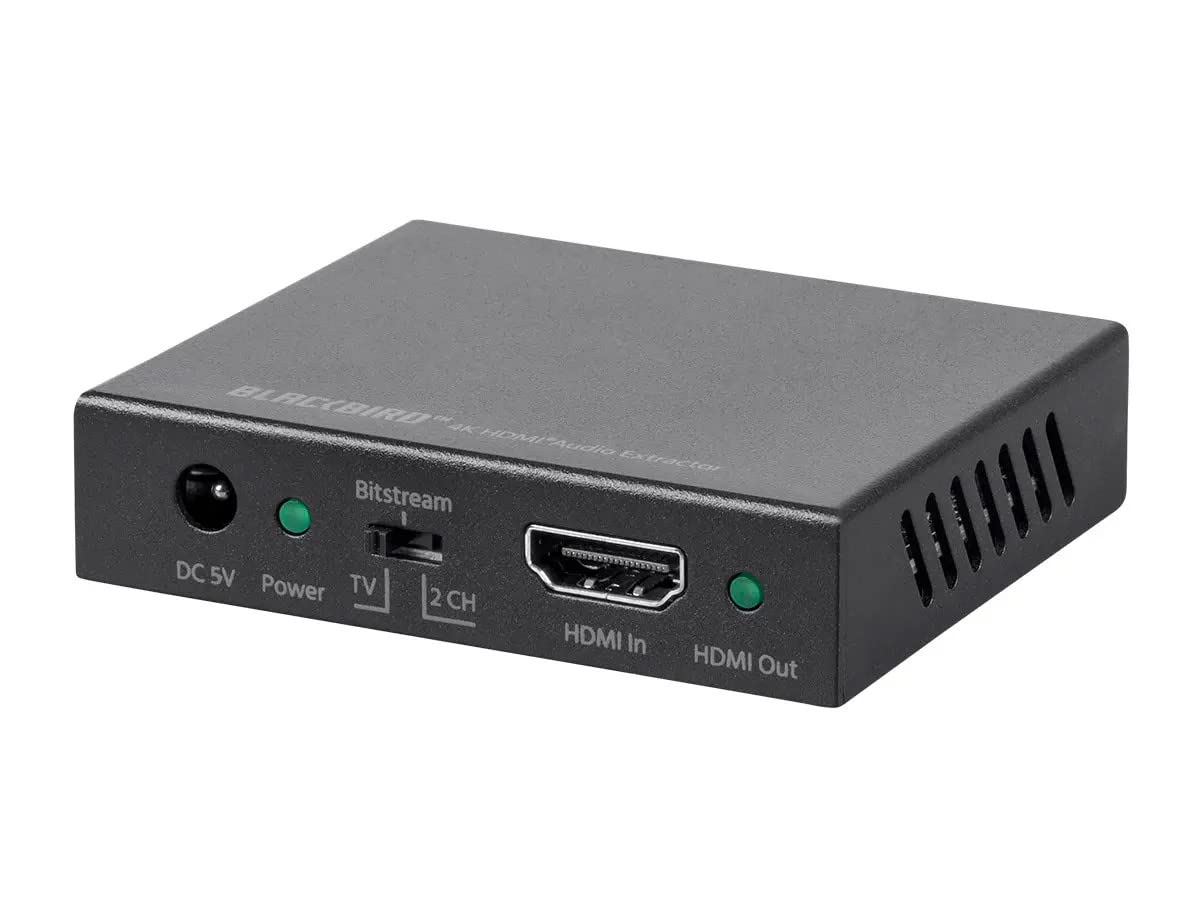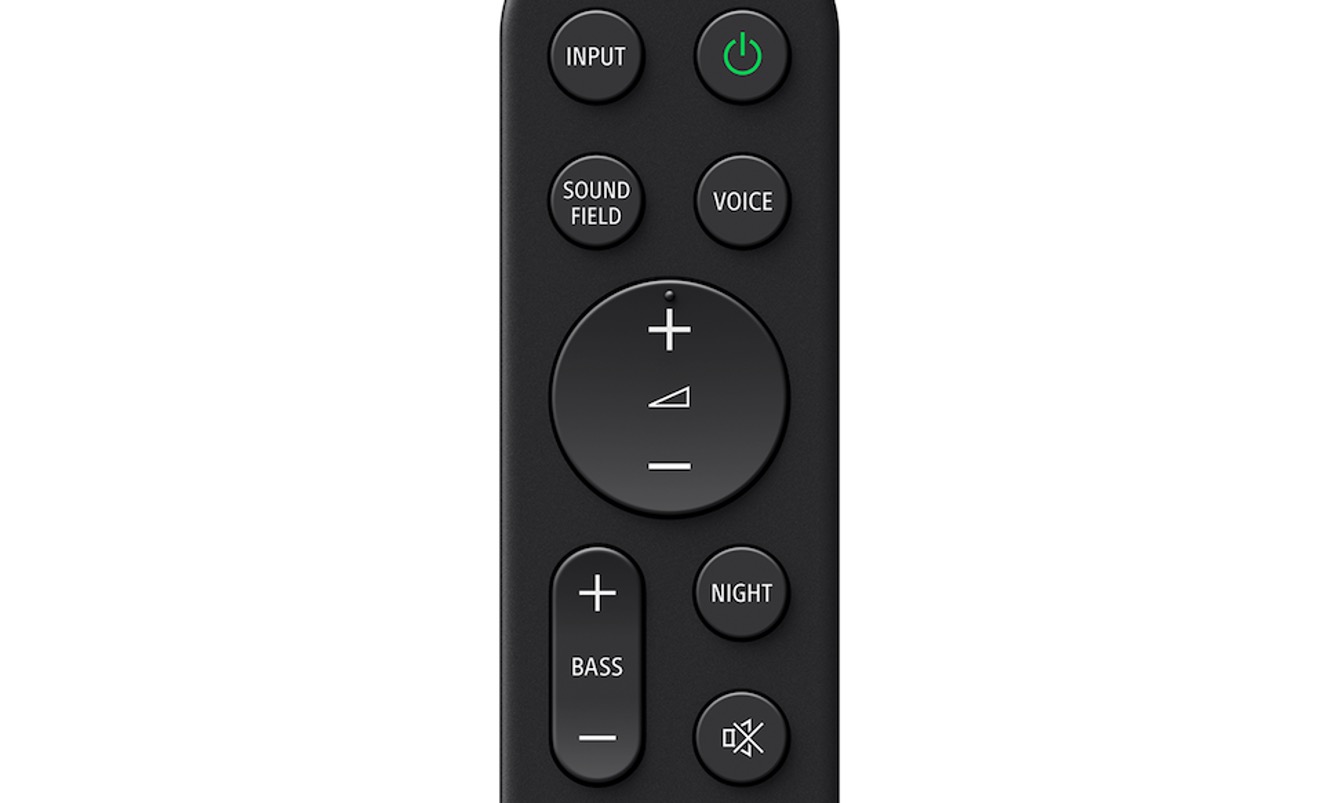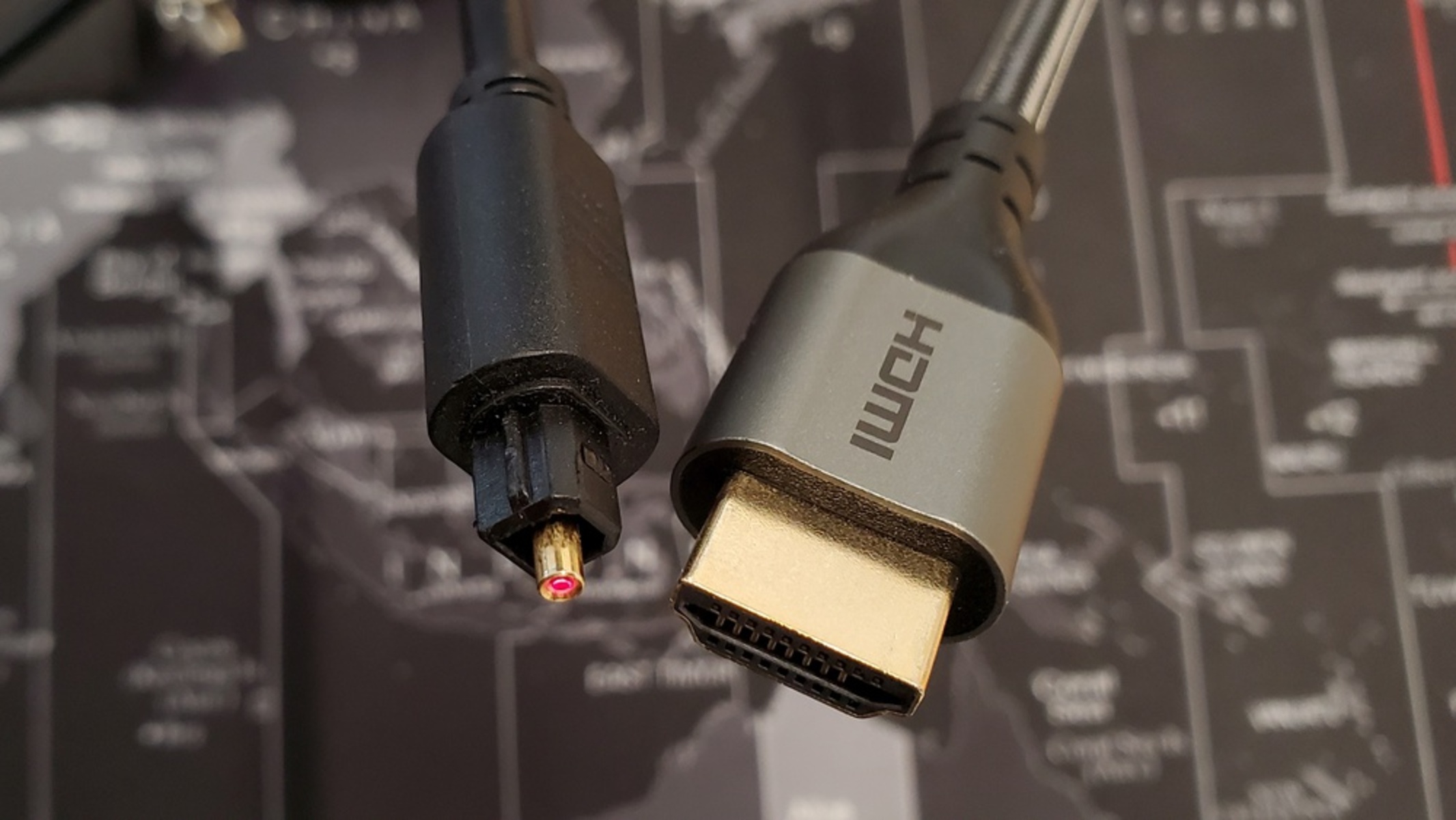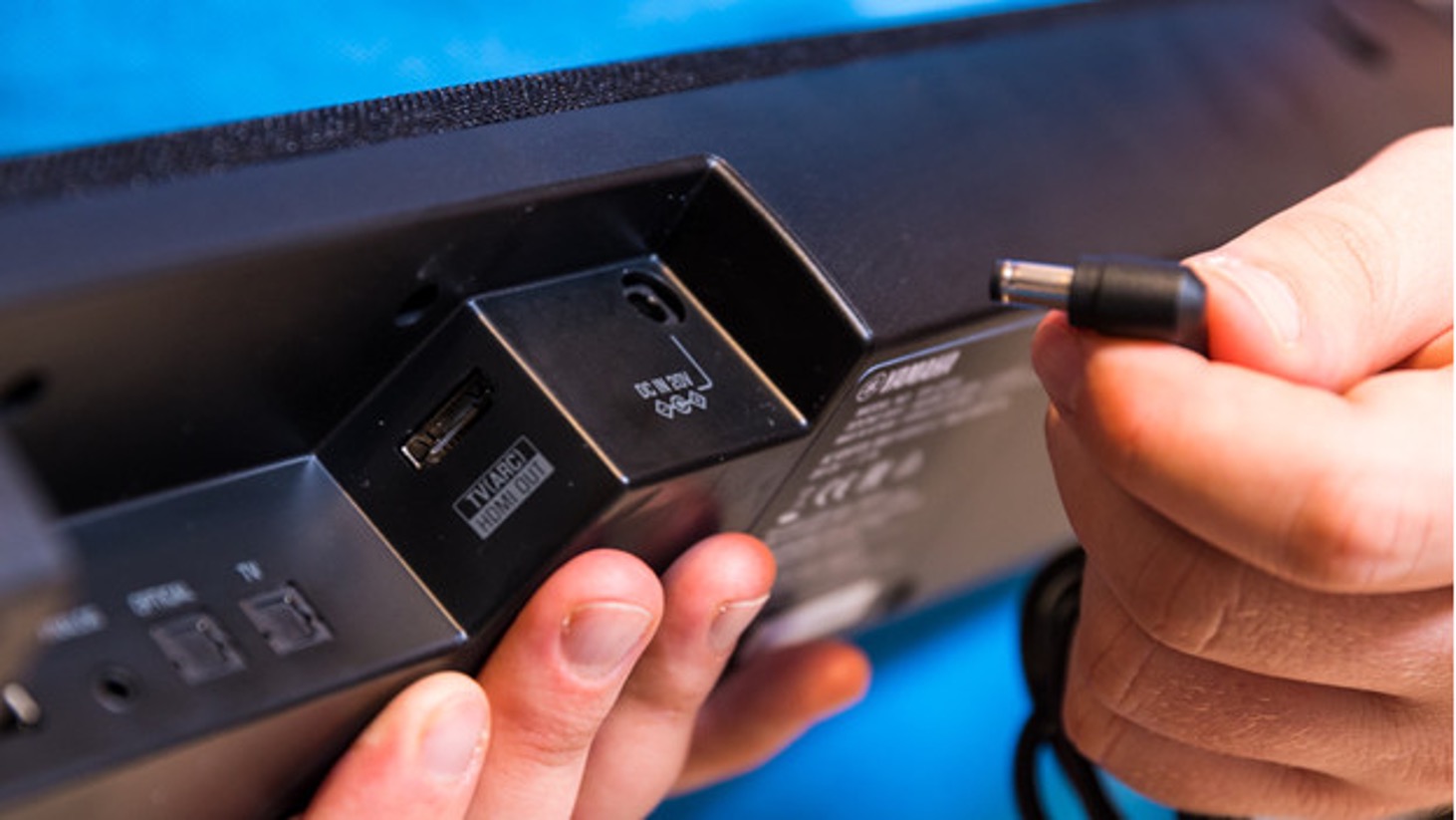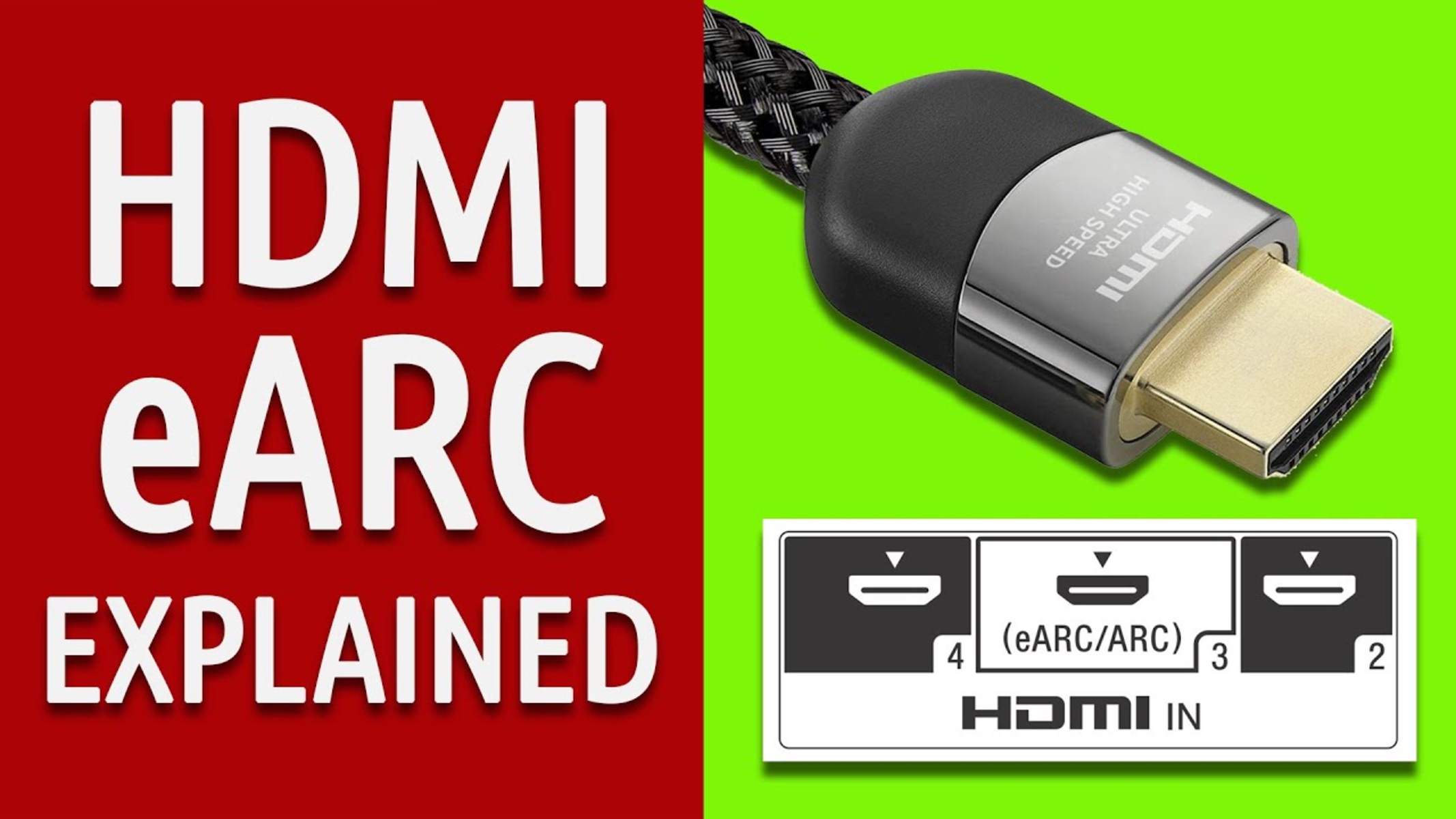Introduction
Welcome to the world of HDMI Arc! In this digital age, where audio and visual experiences are becoming increasingly important, having the right technology to enhance your home entertainment system is crucial. HDMI Arc, or Audio Return Channel, is a feature that simplifies and improves the audio connectivity between your TV and sound system.
Gone are the days of dealing with multiple cables and complex setups just to enjoy immersive sound. HDMI Arc streamlines the audio connection process by eliminating the need for separate audio cables. With HDMI Arc, a single HDMI cable can transmit both audio and video signals, making it a convenient and efficient solution for your home theater system.
Whether you’re a movie enthusiast, a gaming fanatic, or just someone who loves to unwind with your favorite music, HDMI Arc can take your audio experience to the next level. This technology allows you to enjoy high-quality surround sound without the need for additional equipment or complicated configurations.
Are you tired of having to adjust the volume on multiple devices individually? HDMI Arc simplifies this process by synchronizing the volume control of your TV and audio system. You can control the volume with just one remote, giving you a seamless and hassle-free audio experience.
In this article, we will explore the benefits of HDMI Arc, how it works, and provide you with essential tips for setting up and troubleshooting any potential issues. Whether you’re a tech-savvy user or new to the world of audio connectivity, this guide will help you make the most of your HDMI Arc-enabled devices.
What is HDMI Arc?
HDMI Arc, short for Audio Return Channel, is a feature that simplifies and enhances the audio connectivity between your television and sound system. It allows for two-way communication between your TV and audio device via a single HDMI cable, eliminating the need for multiple cables and reducing clutter.
Traditionally, connecting your TV to an audio device required a separate optical or analog audio cable. This meant having to deal with extra cables and potentially complex setup processes. With HDMI Arc, you can streamline your audio setup and enjoy the benefits of a simplified and seamless audio experience.
The primary purpose of HDMI Arc is to transmit audio signals from your TV to an external audio system, such as a soundbar or AV receiver. This enables you to enjoy high-quality sound directly from your television without the need for additional audio cables or configurations.
Another advantage of HDMI Arc is the ability to use your TV’s remote control to adjust the volume on your connected audio device. This integration simplifies the control process, providing a more convenient and streamlined user experience.
HDMI Arc is a valuable feature for those who want to optimize their home theater system. It allows for the transmission of various audio formats, including Dolby Digital and DTS, delivering immersive and high-definition sound for an enhanced viewing experience.
It’s important to note that not all HDMI ports on a TV support the HDMI Arc feature. Before setting up HDMI Arc, make sure to identify the specific HDMI port on your TV that supports this functionality. Keep in mind that the HDMI Arc feature may have different names or be labeled differently across various TV brands.
Overall, HDMI Arc is a game-changer in simplifying audio connectivity between your TV and external audio devices. It offers a convenient and efficient solution to enhance your home entertainment experience, providing a seamless audio connection and reducing cable clutter.
The Benefits of HDMI Arc
HDMI Arc offers several benefits that enhance your audio experience and simplify your home entertainment setup. Let’s explore some of the key advantages:
- Simplified Audio Connectivity: One of the major benefits of HDMI Arc is the elimination of extra audio cables. With a single HDMI cable, you can transmit both audio and video signals, reducing cable clutter and making your setup more streamlined.
- Enhanced Audio Quality: HDMI Arc supports various audio formats, including Dolby Digital and DTS, allowing you to enjoy immersive and high-quality sound. Whether you’re watching movies, playing games, or listening to music, HDMI Arc delivers clear and dynamic audio for a captivating experience.
- Volume Control Integration: With HDMI Arc, you can control the volume of your audio device using your TV’s remote control. This integration simplifies the control process, eliminating the need for multiple remotes and providing a seamless user experience.
- Convenient Setup: Setting up HDMI Arc is straightforward. Once you have a compatible TV and audio device, simply connect them using an HDMI cable and enable the HDMI Arc feature in the settings. This simplicity saves you time and ensures a hassle-free installation process.
- Flexibility: HDMI Arc is versatile and can be used with various audio devices, such as soundbars, AV receivers, and home theater systems. It allows you to connect multiple devices to your TV, offering flexibility in creating a customized audio setup that suits your preferences.
These benefits make HDMI Arc an essential feature for anyone looking to improve their audio setup and take their home entertainment experience to the next level. Whether you’re a movie enthusiast, a gamer, or a music lover, HDMI Arc offers convenience, enhanced audio quality, and easy integration, making it a worthwhile investment.
How HDMI Arc Works
HDMI Arc utilizes the Audio Return Channel (ARC) functionality, which allows for two-way communication between your TV and audio device over a single HDMI cable. Here’s a breakdown of how HDMI Arc works:
- Audio Transmission: When you connect your TV to an audio device using an HDMI Arc-enabled HDMI port, the TV sends audio signals to the connected audio device. This means that the sound from your TV’s internal speakers or any audio playing on your TV, such as streaming services or connected devices, can be transmitted to the audio device.
- Control Signals: HDMI Arc also enables the two devices to communicate control signals. This allows you to use your TV’s remote control to adjust the volume on the connected audio device. The control signals are sent back and forth between the TV and audio device, synchronizing the volume control for a seamless user experience.
- HDMI CEC: To enable HDMI Arc functionality, both the TV and audio device must support HDMI CEC (Consumer Electronics Control). HDMI CEC is a feature that allows interconnected HDMI devices to communicate and control each other using a single remote control. This ensures the synchronization and seamless operation between your TV and audio device.
- Cabling Configuration: To set up HDMI Arc, you need to connect your TV’s HDMI Arc-enabled HDMI port to the ARC-supported HDMI port on your audio device using a high-speed HDMI cable. Ensure that both the TV and audio device are powered on and configured correctly to enable HDMI Arc functionality.
It’s important to note that there may be slight variations in setup and configuration depending on the specific make and model of your TV and audio device. Consult the user manuals or manufacturer’s instructions for detailed steps on enabling and configuring HDMI Arc for your setup.
Overall, HDMI Arc simplifies the audio connection process and enhances the communication between your TV and audio device. It allows for the transmission of audio signals and control commands, making it easier for you to enjoy high-quality sound and control the volume using just one remote.
Setting Up HDMI Arc
Setting up HDMI Arc requires a few simple steps to ensure a successful connection between your TV and audio device. Here’s a step-by-step guide to help you get started:
- Check Compatibility: First, confirm that both your TV and audio device support HDMI Arc. Look for the HDMI port on your TV labeled with “ARC” or “Audio Return Channel,” and ensure that your audio device also has an ARC-compatible HDMI port.
- Connect HDMI Cable: Take an HDMI cable and connect one end to the ARC-enabled HDMI port on your TV. Connect the other end to the ARC-supported HDMI port on your audio device, such as a soundbar or AV receiver. Make sure the HDMI cable is securely plugged into both devices.
- Power On Devices: Turn on both your TV and audio device. Ensure that they are both powered on and ready for setup.
- Configure TV Settings: Access your TV’s settings menu and navigate to the audio settings. Look for the option to enable HDMI ARC or Audio Return Channel. Enable this feature to allow the audio signals to be transmitted through the HDMI connection.
- Configure Audio Device Settings: Depending on your audio device, you may need to adjust the settings to activate the HDMI Arc functionality. Consult the user manual of your audio device for specific instructions on enabling HDMI Arc and selecting the appropriate input source.
- Test and Troubleshoot: Once the setup is complete, test the audio connection by playing a sound or video on your TV. Ensure that the audio is coming out from your audio device correctly and that the volume control on your TV’s remote is adjusting the volume on the audio device. If you encounter any issues, refer to the troubleshooting section below for potential solutions.
It is important to note that the exact steps and settings may vary depending on the make and model of your TV and audio device. Always refer to the user manuals or manufacturer’s instructions for detailed instructions specific to your devices.
By following these steps and ensuring that the HDMI ARC feature is enabled correctly on both your TV and audio device, you can enjoy a simplified and enhanced audio experience with HDMI Arc.
Troubleshooting HDMI Arc Issues
While HDMI Arc provides a convenient way to connect your TV and audio device, technical issues can occasionally arise. Here are some common troubleshooting steps to help you resolve HDMI Arc-related problems:
- Check HDMI Cables: Ensure that the HDMI cable is securely connected to both your TV and audio device. Sometimes, loose or faulty HDMI cables can cause audio issues. Try disconnecting and reconnecting the HDMI cable to ensure a proper connection.
- Verify HDMI Arc Compatibility: Double-check that both your TV and audio device support HDMI Arc. Look for the “ARC” or “Audio Return Channel” label on the HDMI ports. If either device does not support HDMI Arc, you may need to use alternative audio connection methods, such as optical or analog cables.
- Enable HDMI Arc on Your TV: Access your TV’s settings menu and ensure that HDMI Arc is enabled. Sometimes, this feature may be turned off by default. Consult your TV’s user manual or manufacturer’s instructions to locate and enable HDMI Arc in the settings menu.
- Update Firmware: Make sure your TV and audio device’s firmware is up to date. Manufacturers often release firmware updates that address compatibility and performance issues. Check the manufacturer’s website for the latest firmware updates and follow the instructions to update your devices.
- Reset Devices: If you’re still experiencing issues, try performing a power reset on both your TV and audio device. Turn off both devices, unplug them from the power source, and wait for a few minutes. Then, reconnect and power them on again. This simple reset can often resolve temporary glitches.
- Disable CEC: If the HDMI Arc functionality is still not working properly, try disabling the HDMI CEC feature on both your TV and audio device. While HDMI CEC allows for control synchronization, it can sometimes cause conflicts. Disabling it may resolve certain compatibility issues.
If you’ve gone through these troubleshooting steps and are still experiencing difficulties with HDMI Arc, it may be helpful to consult the user manuals of your TV and audio device or reach out to their customer support for further assistance. They can provide specific guidance based on your devices’ make and model.
Remember that patience and persistence are key when troubleshooting technical issues. By following these steps and seeking help when needed, you can overcome HDMI Arc issues and enjoy a seamless audio connection between your TV and audio device.
Common FAQs about HDMI Arc
As HDMI Arc continues to gain popularity, users often have questions about its functionality and implementation. Here are some frequently asked questions and their answers to help clarify any doubts:
- Q: Can any HDMI cable be used for HDMI Arc?
A: Yes, HDMI Arc is compatible with standard HDMI cables. However, it is recommended to use high-speed HDMI cables for optimal performance, especially if you plan to transmit high-quality audio formats like Dolby TrueHD or DTS-HD. - Q: Can HDMI Arc transmit surround sound?
A: Yes, HDMI Arc supports various audio formats, including surround sound formats like Dolby Digital and DTS. This allows for a more immersive audio experience, particularly when connected to a compatible audio device like a soundbar or AV receiver. - Q: Can I use HDMI Arc with older TVs or audio systems?
A: HDMI Arc has been a standard feature on most TVs and audio devices manufactured after 2009. However, if your devices are older, they may not support HDMI Arc. In such cases, alternative audio connection methods like optical or analog cables can be used. - Q: Can I use HDMI Arc with multiple audio devices?
A: Yes, HDMI Arc allows for the connection of multiple audio devices to your TV. However, only one audio device can receive audio signals at a time. You may need to manually switch the audio output settings on your TV to select the desired audio device. - Q: Can I use HDMI Arc for a two-way audio connection?
A: HDMI Arc supports two-way audio communication, allowing audio signals to be sent from your TV to the connected audio device and vice versa. This enables you to use the audio device’s built-in speakers for regular TV watching and the TV’s speakers for audio streamed through the device. - Q: Why is the HDMI Arc audio not working?
A: There could be several reasons why the HDMI Arc audio is not working, such as incorrect settings, faulty cables, or compatibility issues. To troubleshoot this, ensure that HDMI Arc is enabled on both your TV and audio device, check the cable connections, and consider following the troubleshooting steps mentioned earlier.
If you have specific concerns or encounter issues with HDMI Arc that are not covered here, it is advisable to consult the user manuals of your devices or contact the respective manufacturers for personalized support and guidance.
By understanding the basics of HDMI Arc and addressing common queries, you can make the most of this technology and enjoy a seamless audio connection between your TV and audio device.
Conclusion
HDMI Arc is a powerful feature that simplifies and enhances the audio connectivity between your TV and audio devices. With its ability to transmit audio signals and control commands through a single HDMI cable, HDMI Arc provides a streamlined and convenient solution for your home entertainment setup.
By eliminating the need for multiple audio cables and enabling volume control synchronization, HDMI Arc offers a hassle-free audio experience. Whether you’re watching movies, playing games, or listening to music, HDMI Arc ensures high-quality audio transmission, immersing you in a captivating sound environment.
Setting up HDMI Arc is relatively straightforward, requiring only an ARC-enabled HDMI port on your TV and an ARC-supported HDMI port on your audio device. Enabling HDMI Arc in the settings and ensuring that your firmware is up to date can help maximize its performance.
However, like any technology, HDMI Arc may encounter issues along the way. By following troubleshooting steps such as checking cable connections, enabling HDMI Arc in settings, and updating firmware, you can address potential problems and enjoy uninterrupted audio connectivity.
Understanding frequently asked questions about HDMI Arc can also enhance your knowledge of this feature. From cable compatibility to surround sound support, having a clear understanding of HDMI Arc’s capabilities and limitations can help you make informed decisions for your home entertainment system.
In conclusion, HDMI Arc is a valuable tool for anyone seeking a streamlined, high-quality audio experience. Its ability to simplify connectivity, enhance audio quality, and synchronize volume control makes it an essential feature for home theater enthusiasts and casual viewers alike.
As technology evolves, HDMI Arc will continue to play a significant role in improving our audio connectivity experience. By staying informed and utilizing the benefits of HDMI Arc, you can elevate your home entertainment setup to new heights. Embrace the power of HDMI Arc and enjoy an immersive audio journey like never before!









